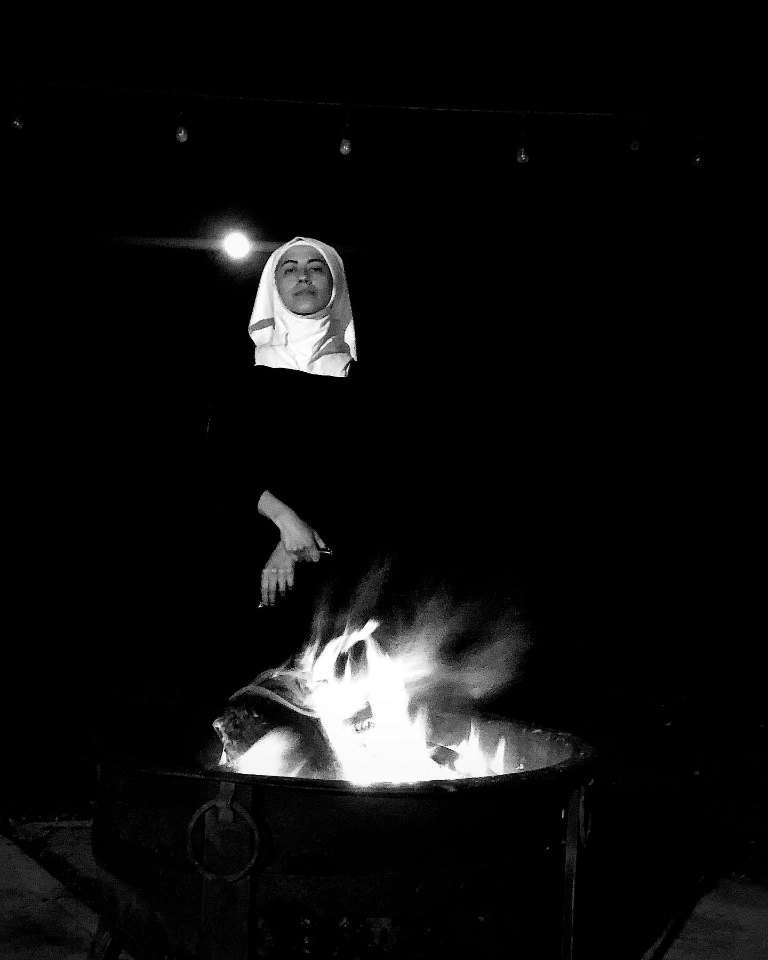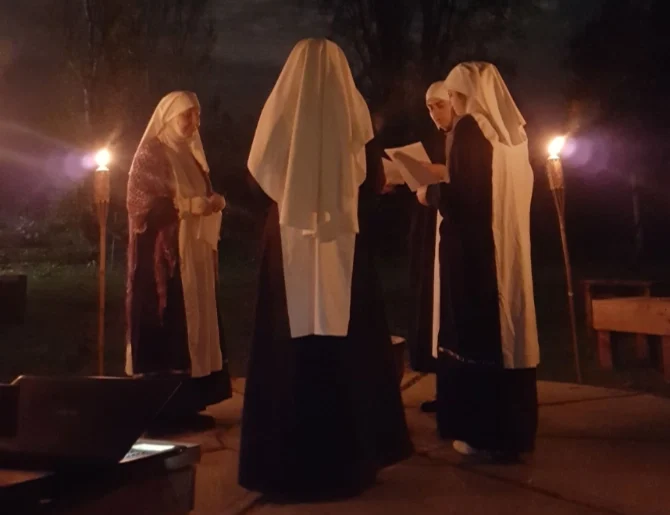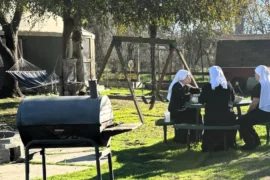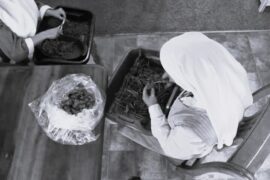Living Through the Dark Night of the Soul
The world is in a state of upheaval. Climate disasters grow in frequency and ferocity, economic systems falter under their own weight, and political instability threatens the cohesion of societies worldwide. This moment in history feels heavy, laden with uncertainty, as if humanity is collectively experiencing the “dark night of the soul” — a profound spiritual crisis that challenges our core beliefs and calls for transformation. It is a time of reckoning, where old paradigms crumble and the seeds of new ways of being are sown.
Historically, such periods of crisis have often been precursors to profound cultural and spiritual shifts. When the Roman Empire fell, it was followed by the rise of new religious movements. After the Great Depression and World Wars, societies redefined their priorities, giving birth to new social contracts. Now, as we face a multitude of existential challenges, we are once again at a crossroads, questioning the systems and beliefs that have brought us to this brink.

Imagining a Post-Apocalyptic Future
In the realm of post-apocalyptic literature and speculative fiction, one recurring theme offers a glimmer of hope: the resurgence of matriarchal societies and goddess-centered spirituality. From Sheri S. Tepper’s The Gate to Women’s Country to Naomi Alderman’s The Power, these narratives imagine futures where humanity turns away from patriarchal gods and hierarchical structures, finding renewal in feminine principles of cooperation, nurture, and balance.
These stories resonate deeply because they tap into an ancient wellspring of wisdom. They imagine societies where the divine feminine is not only revered but central to governance, spirituality, and daily life. The common thread in these imagined futures is a return to values that prioritize community, sustainability, and the interconnectedness of all living things — values often embodied by matriarchal systems and goddess worship.
This is not a new idea but a reawakening. Long before patriarchal religions dominated the world, ancient societies celebrated the divine feminine. They honored goddesses of fertility, creation, and wisdom, recognizing the cyclical nature of life and the sacredness of the Earth. In times of crisis, these narratives suggest that humanity’s collective consciousness will reject completely patriarchal gods and religion and instead, gravitate toward these ancient, life-affirming matriarchal principles.
The Systemized Resistance to Matriarchal Religions
Despite their deep historical roots, matriarchal religions remain conspicuously absent from modern institutional frameworks. In North America, South America, and Europe, no government-registered 501(c)(3) entities or equivalent organizations are explicitly dedicated to matriarchal spirituality. This absence is not coincidental; it reflects a broader, systemic resistance to empowering women-led spiritual movements.
One can only wonder about the history of this absence. The last recorded witch trials in Europe occurred in the late 18th century, and just over a century later, in 1890, the framework for 501(c)(3) organizations began to take shape in the United States. It was a journey of less than 120 years for society to transition from condemning women as witches to legally allowing religious nonprofit organizations, yet no registered matriarchal religions emerged.
Did women in the early years of this framework apply to form such organizations and face rejection? Or has the long shadow of patriarchal domination discouraged even the attempt?
In 1890, when the United States first laid the foundations for modern charitable tax exemptions, was there a woman envisioning a matriarchal religious order, her application quietly shelved?
By 1910, did someone else try again, only to be met with bureaucratic resistance or societal ridicule?
These questions remain unanswered, but the silence in the records speaks volumes. Whether through rejection or omission, the result has been the same: a systemic erasure of matriarchal spiritual frameworks from recognized institutions.
It is evident that patriarchal systems have long held a monopoly on religious, political, and economic spheres, systematically suppressing alternative structures that challenge their authority. This suppression is evident in the lack of access to tax-deductible fundraising for matriarchal movements, effectively excluding them from the financial resources necessary to grow and thrive. The result is a perpetuation of inequities that keep women and their spiritual traditions starved of funds, unable to gain a reasonable footing from which to play.
Yet the demand for such spaces is undeniable. In an era of disillusionment with traditional institutions, many are seeking spiritual frameworks that align with values of equality, compassion, and sustainability. The systematic exclusion of matriarchal religions denies society of the opportunity to explore and embrace the very path that provides the most comfort and healing.
The Early Vision for the Sisterhood
When I first formed the Sisters of the Valley, I had already spent four years attending protests as Sister Occupy, engaged in countless discussions about societal change. Understanding my beliefs, men and women alike encouraged me to create a religion. But my answer was always, “If you line up any random 1,000 people from any country and ask everyone to raise their hand who thinks we need another religion on the planet, no one, ever, would raise their hands.”
What I didn’t realize at the time was that all religions are patriarchal. If I had known, I might have revised that line to make it clear: we don’t need another patriarchal religion. The absence of matriarchal religions is not accidental. They’ve been systematically erased, banned since the witch-burnings began.
Furthermore, I have come to believe that the endurance of the patriarchal religions depends significantly upon their feminine icons, as women have always found ways to connect with the divine feminine. My mother, for example, only prayed to the Virgin Mary. She would say, “I take my problems to Mary, and Mary takes them to Jesus. What son would deny his mother’s request?”
As a young girl hearing this logic for the first time, I found the idea too political for my tastes, as if Mary were being used as a personal lobbyist. Also, as far as men go, Jesus was quite approachable in my humble opinion, but I knew better than to argue with Mom on religion.
As I grow older, my understanding of my Mother’s viewpoint comes better into view. I see things differently. I now see Mary’s enduring popularity as something that comes from a deep societal need to connect with the feminine divine. Whether consciously or not, she became a bridge for those seeking the compassion and nurture traditionally associated with the goddess archetype.
Ancient Ways for New Times
Matriarchal religions and goddess-centered spirituality offer profound lessons for navigating the challenges of the present and I truly belief that the answer to surviving the dark night of the soul is in reconnecting with ancient ways of living and thinking. They remind us of the importance of balance, the sacredness of the natural world, and the interconnectedness of all life.
These ancient principles could guide us toward a more harmonious way of being. They invite us to reconsider our relationship with the Earth, to prioritize community over competition, and to embrace cycles of renewal and rebirth. By weaving these timeless values into our modern lives, we may find a path forward that heals not only our planet but also our fractured spirits.
To create a space for matriarchal spirituality is not just to honor history, but to embrace a path forward that prioritizes healing, equity, and a deeper connection to the natural rhythms of life. It is to answer a call that has echoed through centuries, inviting humanity to reclaim balance and harmony.
The idea of founding the first government-recognized matriarchal religion may feel revolutionary, but in truth, it is to make a fair and equal space for a belief system that has at its core, a return to the very roots that have sustained humanity for millennia. It is an acknowledgment that the future we imagine might already be written in the wisdom of the past, waiting for us to rediscover it.










Comments are closed.